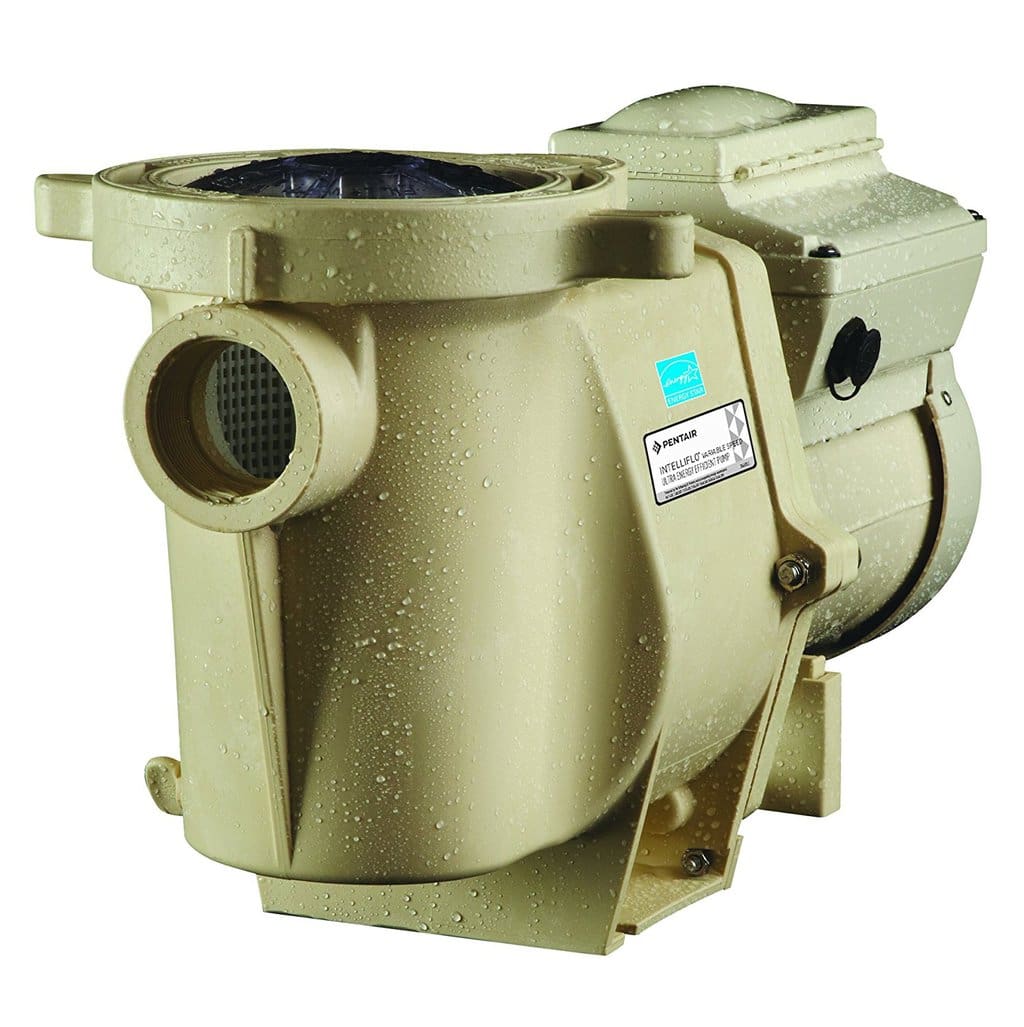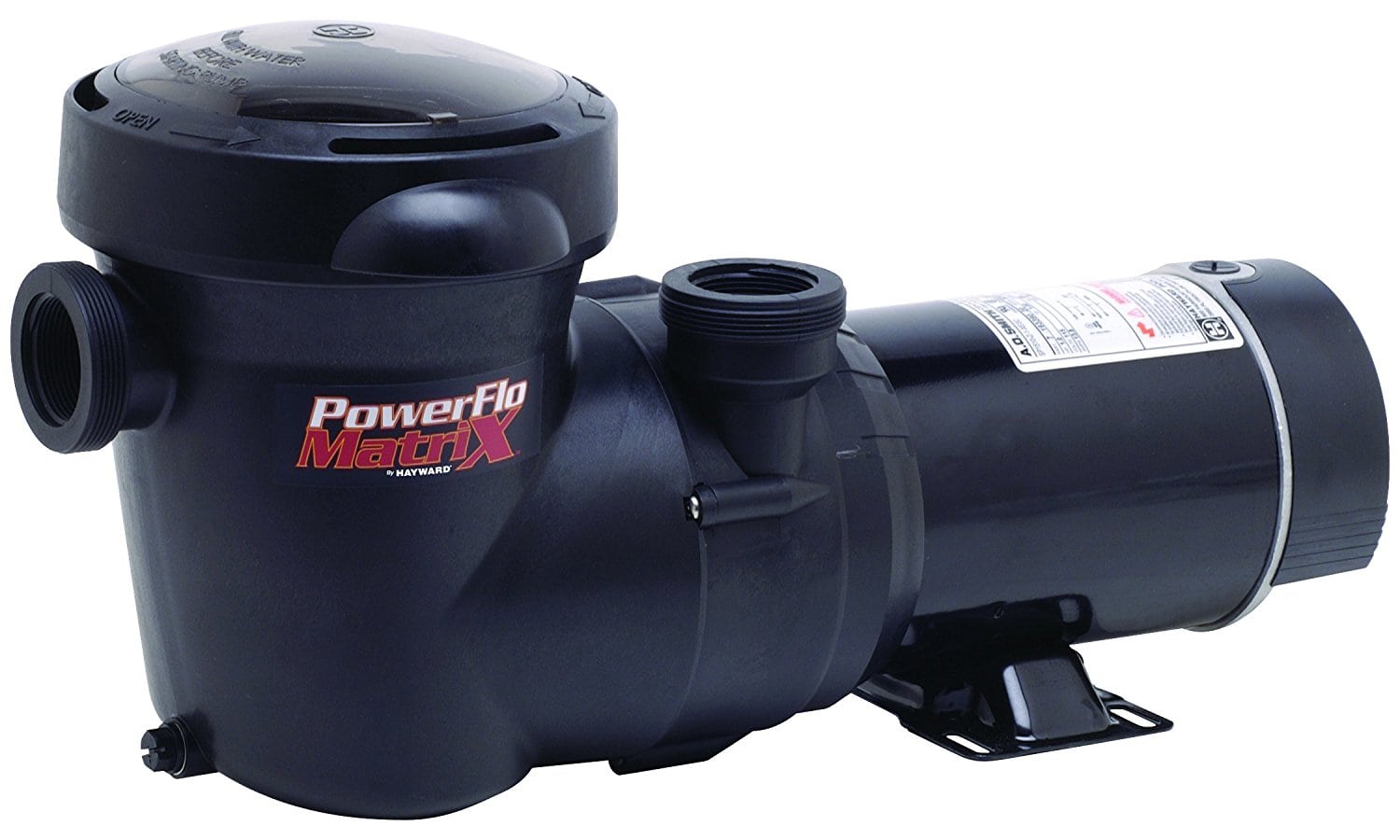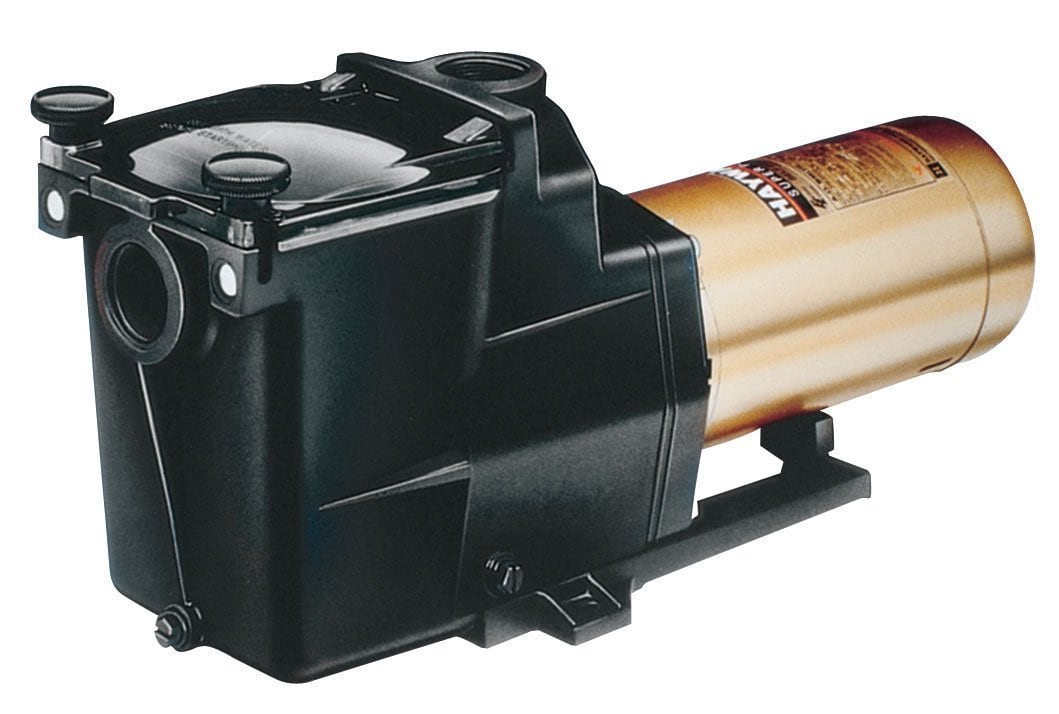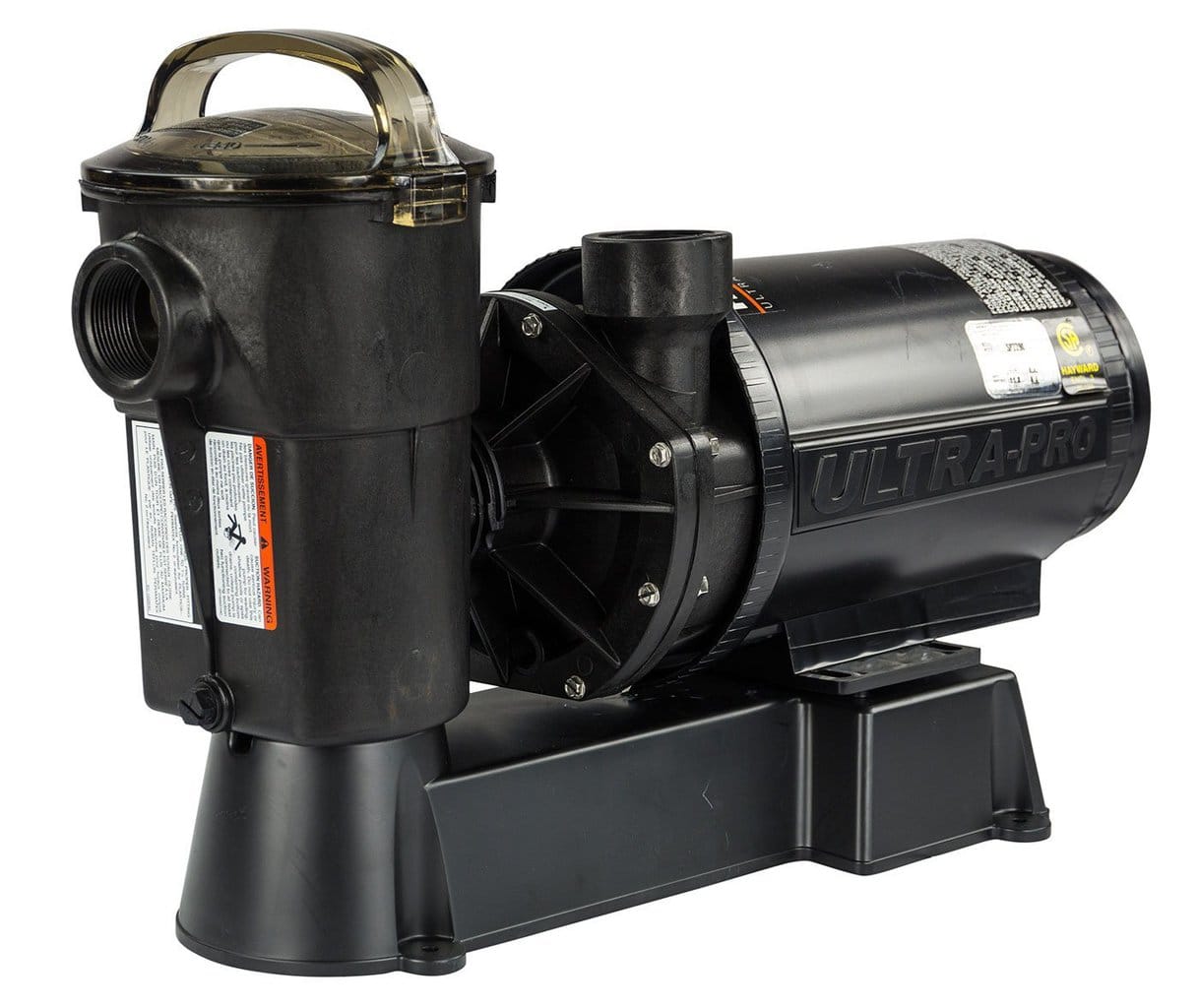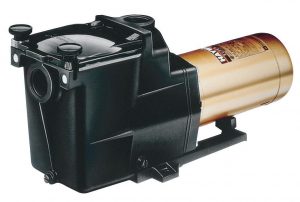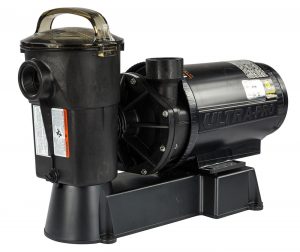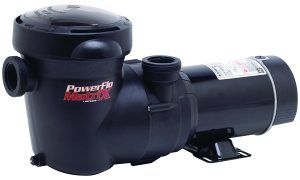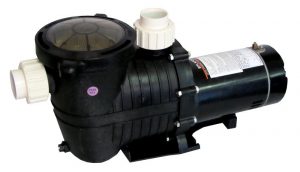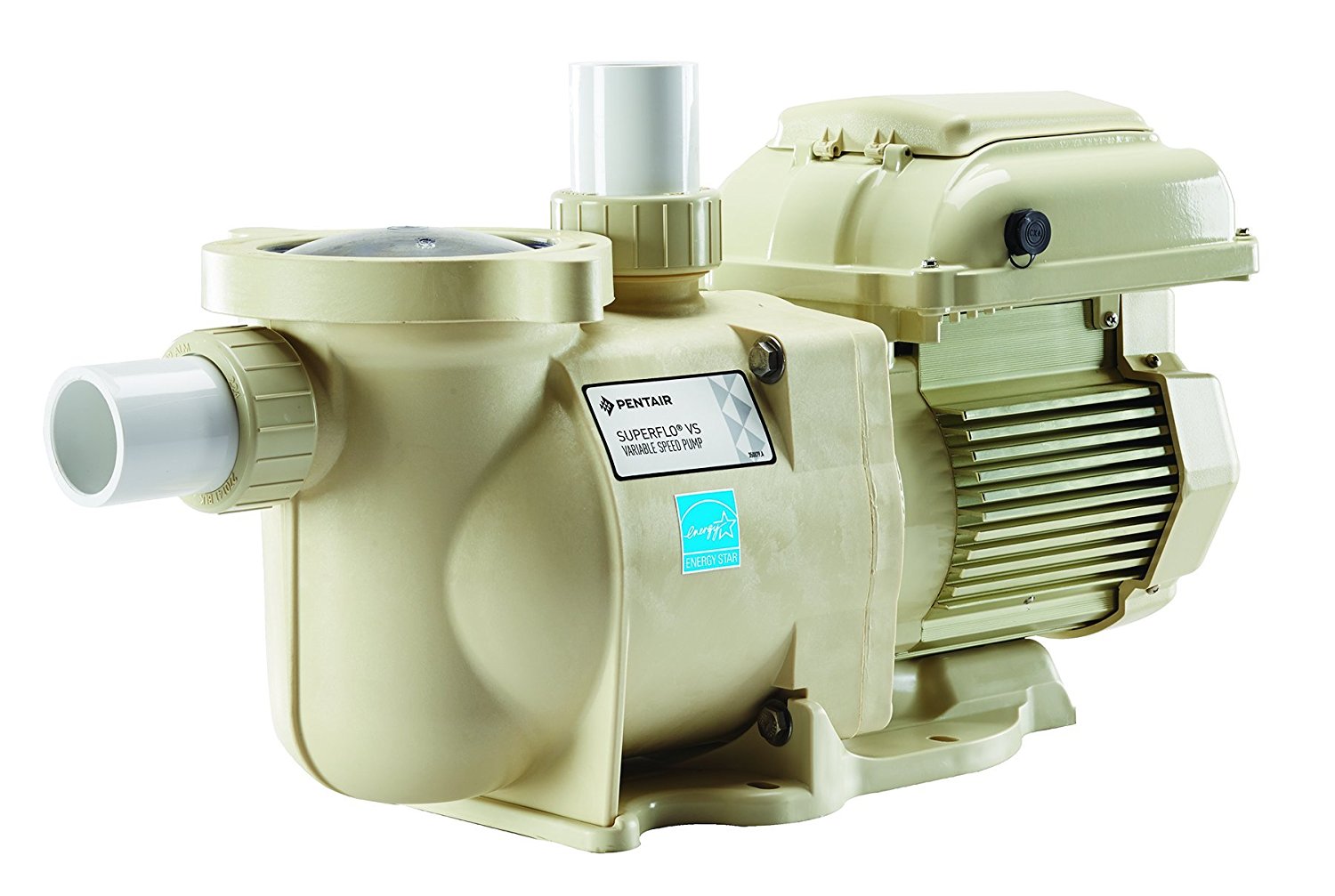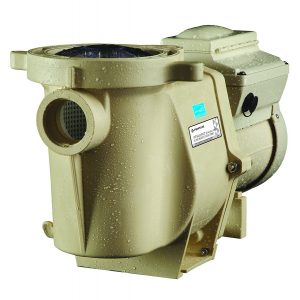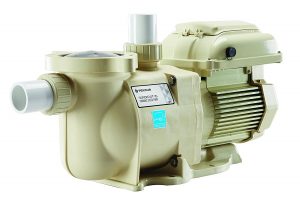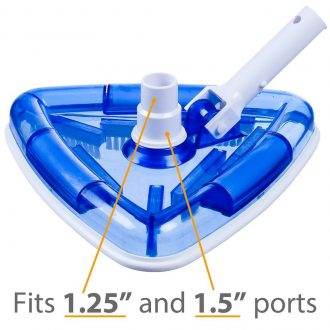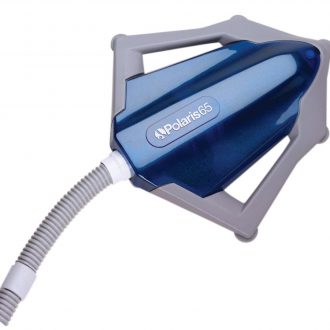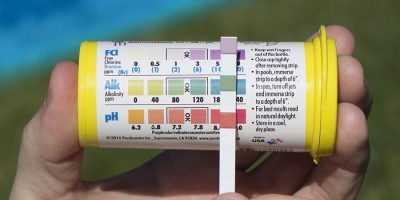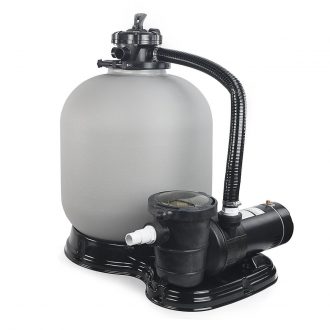Especially for new pool owners, a pool pump (together with a filter) is an essential unit to have when it comes to taking care of your pool and preventing annoying algae, cloudy water, and debris from taking over. Below is our selection of the best pool pumps available for online purchasing.
Best-selling quiet pump with large savings potential.
Popular industry’s workhorse with see-through strainer cover.
There are many models and makes of pool pumps with a different horsepower, voltage, and flow rate, so we broke it down and compared single speed, two speed, and variable speed pumps for you to choose from for both in-ground and above-ground pools.
You may also be interested in How to Choose the Right Swimming Pool Filter + Reviews.
Best Single Speed Pool Pumps of 2020
Popular industry’s workhorse with see-through strainer cover.
Above-ground option with extra large strainer basket.
Hayward SP2607X10 Super Pump 1-HP
This is probably one of the most popular in-ground pool pumps, and like other Hayward pumps, no tools are required to take the strainer off since it utilizes exclusive swing-away hand knobs. It’s considered to be the industry’s workhorse, highly recognized for its reliability and smooth performance.
This is mostly due to the pump’s heavy-duty motor with air-flow ventilation for a quieter and cooler operation (although some say it’s a bit noisy, see below). The see-through strainer cover allows you to see when the basket needs to be cleaned out which saves time and won’t leave you with any guess work.
This self-priming pump has suction lift up to 10-feet above water level, and additionally features an over-sized debris basket (about 110 cubic feet) for extra leaf holding capacity and less maintenance. Its heat-resistant, industrial-size ceramic seal is drip-proof and makes for extra durability. Installation is simplified and to reach the inner workings of the pump, there are only 4 bolts to remove that provide access. Other versions of this pump come in a higher horsepower from 1-HP to ¾-HP.
With an overwhelmingly positive rating of 4.5/5 stars from over 1,200 reviews, 89% gave it a 4 or 5 with many favoring its reliable performance and easy installation. Others have noticed it to be a bit loud and prefer that there was more room to make rewiring easier. Click here to see the customer reviews for yourself
- Large capacity debris basket
- Maintenance requirements are easy to track
- Easy installation
- A bit noisier than expected
- Not prewired so needs minor wiring
- Wiring instructions in installation manual can be confusing
Hayward Ultra-Pro LX 1.5 HP
This above-ground pump has a non-conductive and corrosion-proof motor housing that protects it from the elements while insulating the electrical motor parts from any outside contact. Due to its advanced design, operation and maintenance are reduced to simple common sense tasks.
Like on many Hayward pump models, the swing-aside hand knobs make strainer cover removal effortless, and the Lexan transparent strainer cover lets you known when the basket needs cleaning.
The strainer basket is 50% larger than normal and has an integral non-corrosive handle. The load extender ribbing makes for free-flowing operation and the heavy-duty motor makes for a quieter and cooler performance. The pipe size is measured at 1 ½ inches with a horsepower of 1.5 and a voltage of 115. When you need to reach the pump’s internal parts, the service-ease design makes it easy to access them.
While there aren’t many reviews, its rating is at a perfect 5 stars with users praising the pump’s quiet operation and strong motor power. Although the base of the pump can make it create a soft hum, the noise isn’t very noticeable. It has a long cord and the on-off switch seems to be appreciated by users so you don’t have to plug and unplug the pump constantly. Click here to see the customer reviews for yourself
- On-off switch to avoid frequent plugging and unplugging
- 50% larger strainer basket
- Service-ease design for simple access to inner parts
- Base creates soft hum, but not too loud
- Cord is long so can be a tripping hazard or can get tangled
Best 2-Speed Pumps Pool Pumps of 2020
Hayward SP15922S Power-Flo Matrix Above-Ground Pump
Ranging from 1-horsepower to 1.5-horsepower, this pump is ideal for those who like to save energy. It includes an off/switch so you can avoid constantly plugging and unplugging it whenever you need to use it. The industrial size strainer basket can pick up large debris for less maintenance to worry about, along with an advanced impeller design that prevents clogging from leaves and other debris.
Its high-performance motor has an automatic thermal overload protector that automatically turns off the pump before a clogged up skimmer or plumbing can damage the entire thing.
The nifty quick-disconnect pipe fittings make it easier to service the pump and the pump to filter pipe fitting can go from a vertical to a horizontal discharge simply by pressing a button. Compatible with nearly every type and model of above ground pool filters, this 110-V AC pump comes with a 6-foot long cord and plug.
Based on over 100 reviews, most were positive with 83% of users giving the pump a 4 or 5. Many mention that it’s quiet and moves plenty of water, even at low speed. Some even note that they run it 24/7 with no issues. Other negative reviewers say that the low speed might not move water around enough for bigger pools, and when you turn the pump on, there’s a whining noise for a few minutes. Click here to see the customer reviews for yourself
- Energy-efficient
- Quiet operation
- Powerfully moves water on high speed
- Button for switching vertical to horizontal discharge is hard to locate
- Lid is hard to get on straight
- Makes a slight whining noise for a short time after turning it on
Energy Efficient 2 Speed Pump for In-Ground Pool 1.5 HP-230V with Fittings
Designed for in-ground pools, this pool pump has a low speed setting for general everyday operation and a high-speed setting for when you’re vacuuming your pool or using other tools. At the back of the pump lies a switch where you can conveniently toggle between these two speeds.
It runs at 1.5-horsepower where manufacturers claim the pump is quiet, efficient, and self-priming, and its corrosion-proof polymer build can provide years of reliability.
The strainer has a large and easy to clean basket and the see-through lid and comfortable handle allows you to quickly inspect the strainer. To keep your pool water clear, the suction and discharge ports are threaded for fittings of 1 ½ inches which makes for smooth water flow. For easy winter maintenance, this 230-V pump also has a convenient drain plug.
There are only a few reviews for this pump, but it has received an overall positive rating. Some complaints were due to poor installation instructions while others liked how quiet the pump was and pointed out its longevity. Click here to see the customer reviews for yourself
- Saves on energy costs
- Transparent lid for quick strainer inspection
- Operates quietly
- Poor installation directions
- not prewired
Best Variable Speed Pumps Pool Pumps of 2020
Best-selling quiet pump with large savings potential.
Slightly less expensive and also popular.
Pentair 011018 IntelliFlo
This variable speed pump is a fairly popular choice in its category where manufacturers claim it can boost energy savings up to 90% compared to traditional pool pumps. It has 8 programmable speed settings and a built-in timer to make sure that the pump runs at optimum speed and duration.
It’s also dramatically quieter during operation for its noise level is as low as 45 decibels, which is 4 times quieter than most traditional pumps. This is due to the permanent magnet motor – which is similar to the ones used in hybrid cars – which reduces noise and vibration.
The built-in diagnostics work to protect the pump so that it can have a longer service life and the completely enclosed fan-cooled design protects the pump’s working parts against outside elements. It’s said to improve filter and chlorinator performance, reduce algae build-up, and lets you add extra pool features without them reducing the pump’s efficiency.
The integrated keypad and LCD screen display allows you to choose your speed setting and see your wattage consumption, along with the exclusive software and digital controls that make programming the pump easy.
Out of over 300 reviews, 81% of users gave the pump a 4 or a 5. Most showed favor towards its low noise and ability to reduce energy consumption. On the other hand, the lid was reported to be a pain to put back on and the basket may be too small for certain sized pools. Click here to see the customer reviews for yourself
- Saves energy up to 90% compared to traditional pumps
- Little to no sound during operation
- 8 programmable speed settings and built-in timer
- Multiple settings can be a bit overwhelming
- Lid is difficult to put back on
- Programming can be confusing
Pentair 342001 SuperFlo VS
For those looking for a pump that doesn’t use up a lot of energy, this Pentair SuperFlo variable speed pump is claimed to bring remarkable energy cost savings for everyday pools that need up to a 1.5 HP pump. Energy costs are reduced since the pump moves water more efficiently at lower speeds and doesn’t need any expensive rewiring done, not to mention it’s able to adapt to your 115 or 230-volt power.
Due to the completely enclosed fan-cooled (TEFC) motor, it runs quietly as it moves the pool water around.
The pump additionally features a real-time, 24-hour clock with memory retention and the user-friendly digital keypad interface lets you easily program up to three speeds plus set an override speed setting. For a quick and simple connection, the pump also has an easy-to-access wiring compartment.
From a decent handful of reviews, the pump has a highly positive rating of 4.6/5 stars, with 88% giving it a 4 or 5. Many pointed out that there was little to no whining or noise coming from the pump and that the built-in control system is easy to program. Other negative reviews mainly focused on the short warranty if it’s not installed by a professional and that the PVC plumbing can be a bit difficult. Click here to see the customer reviews for yourself
- Quiet during operation
- Easy to use digital keypad
- Reduces energy consumption
- Very short warranty if self-installed
- Tricky PVC plumbing
Buying Guide: Which Type to Get and What to Look For?
When looking for a pool pump, there are three main types we will mention which are single speed, two speed, and variable speed swimming pool pumps. The “pump” includes all components which are the pump section and the motor. Along with the different types of speeds are other individual factors such as horsepower, voltage, and flow rate. Some pumps may work better than others depending on what type of pool you have.
Single Speed Pool Pumps
As one of the most common pump types in the market, a single speed pool pump moves your pool’s water around at only one constant speed, so whichever function you’re using it for, the pumping power will remain the same no matter what.
Typically, single speed pumps work at around 3,450 revolutions per minute (or RPM) and only have an on/off option. They usually run on either 120 or 220 standard voltage and can fill or empty the pool almost immediately.
- Easy to install, run at constant speed once turned on
- Controlled with a simple on/off option
- Most ideal for immediately filling or emptying a pool
- Least expensive type
- Come in different horsepower ratings
- Consume a lot of energy
- Tend to be noisier than other types of pumps
Two Speed Pool Pumps
Two speed pumps work similarly to single speed pumps except that they can run on high speed and low speed. You can set it to a low speed usually by using a sort of toggle switch or frequency inverter. The low speed setting typically is set at 1725 RPM while high speed is double that at around 3450 RPM.
Most of the time, the low speed option is for basic circulation and filtration while high speed is for tasks such as vacuuming the pool, running a pool heater, or other operations that need more power. They’re more popular than single speed pumps considering that they save a lot more energy.
- Option of high speed or low speed
- Energy efficient with a quieter operation
- Can be easily switched to high speed for cleaning the pool or other tasks
- Using low speed to clean or filter the pool for longer hours doesn’t change amount of energy used
- More expensive than single speed pumps
- Less energy efficient than variable speed pumps
- Low speed can be too low to run most heaters
Variable Speed Pool Pumps
Variable speed pumps are a rather new type of pump that uses permanent magnet motors and allow the speed to be adjusted to the exact flow rate you want it to be. These are the most versatile pumps due to the fact that they offer many different speed option from off to high speed.
With this, there’s less friction on the filter and piping so that the pool can run with reduced energy consumption and users can worry about less damage. Variable speed pumps can run speeds as low as 600 RPM all the way up to 3450 RPM.
- Most flexible speed options
- More efficient than single speed pumps
- Quieter than other pool pump types
- Puts less stress on the motor since speed can be adjusted
- Most expensive pump type
- On certain models, analog control limits number of speeds due to the number of available relays offered in automation system
What to Look For
Horsepower and Voltage
To save in energy costs, it’s best to figure out which pump can get the job done with the least amount of power and to only run it for 8 hours. Residential pumps can be as low as 0.5 horsepower to 3.0 horsepower. Along with horsepower, the voltages supplied to the pump is just as important.
Higher horsepower pumps regularly operate at 230 volts, so if you have a 120-volt current running through your household, then you won’t be able to run bigger pumps. With this, make sure you have the right voltage input to run your pump size.
Flow Rate
A pump’s flow rate is measured in GPM, or gallons per minute, and it essentially means the amount of water a pump can process in a certain amount of time. The minimum and maximum flow rate is definitely something to look out for, especially if you want all of the water in your pool to circulate through the filter within a certain amount of time. This is also known as turnover time, where 8-10 hours is an ideal turnover time for home pools. Once you know the required turnover rate, you can find your required flow rate as well.
Pipe Sizes
Pipes can range from 1.5 inches up to 3.0 inches, and these are often ignored or overlooked when it comes to pumps. It’s best to put a larger pump in a pool plumbed with a larger pipe since putting in a larger pump in a pool with a smaller pipe can result in damages. If this rule of thumb isn’t applied, there can be a lot of stress put on the pipe from the amount of water moving through which could be more than it can handle. Be sure to watch the video above to learn about the importance of pipe sizes.
Conclusion
Whether you choose a single speed, two speed, or variable speed pump, they are all very useful tools that can prevent debris and algae buildup which makes your water clean and safe to swim in for the pool season.
Single speed pumps run at a constant speed and are the most simple and inexpensive type of pump while two speed pumps have both high and low speeds and conserve more energy. Lastly, while they’re the most expensive, variable speed pumps are the most efficient, flexible, and quiet type of pump.
Ultimately, getting a pump unit that’s able to conserve energy and last a long time will save you money in the long run while improving your overall pool experience summer after summer.


